- Clone
- MEC14.7 (See other available formats)
- Regulatory Status
- RUO
- Other Names
- Mucosialin
- Isotype
- Rat IgG2a, κ
- Ave. Rating
- Submit a Review
- Product Citations
- publications
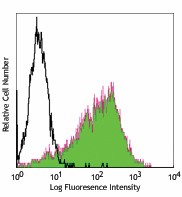
-

Mouse NIH/3T3 cell line stained with purified MEC14.7, followed with biotinylated anti-rat IgG and Sav-PE -

NIH3T3 cells were fixed with 1% PFA and then stained with 10 µg/1ml purified CD34 (clone MEC14.7) for 3 hours at room temperature. The cells were then stained with 2.5 mg/ml anti-rat IgG Dylight™ 594 secondary antibody (red) for 1 hours at room temperature. The nuclei were counterstained with DAPI and are shown in blue. The image was captured by 40X objective. -

C57BL/6 mouse frozen spleen section was fixed with 4% paraformaldehyde (PFA) for 10 minutes at room temperature and blocked with 5% FBS for 30 minutes at room temperature. Then the section was stained with 10 µg/ml of purified anti-mouse CD34 (clone MEC14.7) and anti-mouse CD3ε (clone 500A2) Alexa Fluor® 594 (green) overnight at 4°C, followed by 2.5 µg/mL of Alexa Fluor® 647 goat anti-rat IgG (clone Poly4054, red) for two hours at room temperature. Nuclei were counterstained with DAPI (blue). The image was captured by 10X objective.
| Cat # | Size | Price | Quantity Check Availability | Save | ||
|---|---|---|---|---|---|---|
| 119301 | 50 µg | 57€ | ||||
| 119302 | 500 µg | 235€ | ||||
CD34 is a highly glycosylated hematopoietic progenitor antigen. Two isoforms of CD34 have been reported to be generated by alternative splicing. This antigen is expressed on hematopoietic progenitors as well as on endothelial cells, brain, and testis. CD34 is thought to function as an adhesion molecule for early hematopoietic progenitors mediating the attachment of stem cells to extracellular matrix or stromal cells. CD34 is phosphorylated on serine residues by PKC.
Product DetailsProduct Details
- Verified Reactivity
- Mouse
- Antibody Type
- Monoclonal
- Host Species
- Rat
- Immunogen
- Cells transfected with mouse CD34
- Formulation
- Phosphate-buffered solution, pH 7.2, containing 0.09% sodium azide.
- Preparation
- The antibody was purified by affinity chromatography.
- Concentration
- 0.5 mg/ml
- Storage & Handling
- The antibody solution should be stored undiluted between 2°C and 8°C.
- Application
-
FC - Quality tested
ICC, IHC-F - Verified
WB, IP - Reported in the literature, not verified in house - Recommended Usage
-
Each lot of this antibody is quality control tested by immunofluorescent staining with flow cytometric analysis. For flow cytometric staining, the suggested use of this reagent is ≤1.0 µg per million cells in 100 µl volume. For immunohistochemistry, a concentration range of 5.0 - 10 µg/ml is suggested. It is recommended that the reagent be titrated for optimal performance for each application.
- Application Notes
-
The MEC14.7 antibody does not stain bone marrow cells like some other mouse CD34 antibodies, probably because the antibody recognizes a different epitope from other mAbs. Additional reported applications (for the relevant formats) include: immunoprecipitation, Western blotting6, and immunohistochemistry of acetone-fixed frozen sections and paraffin-embedded sections2,4,5,6.
- Application References
-
- Garlanda C, et al. 1997. Eur. J. Cell Biol. 73:368. (FC)
- Knowles HJ, et al. 2004. Circ. Res. 95:162. (IHC)
- Trempus CS, et al. 2003. J. Invest. Dermatol. 120:501.
- Winding B, et al. 2002. Clin. Cancer Res. 8:1932. (IHC)
- Voswinckel R, et al. 2003. Circ. Res. 93:372. (IHC)
- Kairaitis LK, et al. 2005. Am. J. Physiol. Renal. Physiol. 288:F198. (IHC, WB)
- Ao A, et al. 2008. P. Natl. Acad. Sci. USA 105:7821. PubMed
- Zaynagetdinov R., et al. 2011. J Immunol. 187:5703. PubMed.
- Product Citations
-
- RRID
-
AB_345279 (BioLegend Cat. No. 119301)
AB_345279 (BioLegend Cat. No. 119302)
Antigen Details
- Structure
- Type I membrane protein, 75-120 kD, highly glycosylated; two isoforms reported
- Distribution
-
Hematopoietic progenitors, brain, testis, endothelial cells; low expression in thymus, spleen, and bone marrow
- Function
- Possible adhesion molecule thought to function in early hematopoiesis by mediating attachment of stem cells to bone marrow extracellular matrix or stromal cells. Presents carbohydrate ligands to selectins.
- Ligand/Receptor
- L-selectin, other selectins
- Cell Type
- Endothelial cells, Hematopoietic stem and progenitors
- Biology Area
- Cell Biology, Immunology, Neuroinflammation, Neuroscience
- Molecular Family
- Adhesion Molecules, CD Molecules
- Antigen References
-
1. Garlanda C, et al. 1997. Eur. J. Cell Biol. 73:368.
2. Brown J, et al. 1991. Int. Immunol. 3:175.
3. Suda J, et al. 1992. Blood 79:2288.
4. Baumhueter S, et al. 1994. Blood 84:2554. - Gene ID
- 12490 View all products for this Gene ID
- UniProt
- View information about CD34 on UniProt.org
Related FAQs
Other Formats
View All CD34 Reagents Request Custom Conjugation| Description | Clone | Applications |
|---|---|---|
| Purified anti-mouse CD34 | MEC14.7 | FC,ICC,IHC-F,IP,WB |
| Biotin anti-mouse CD34 | MEC14.7 | FC,IHC-F |
| PE anti-mouse CD34 | MEC14.7 | FC |
| Alexa Fluor® 647 anti-mouse CD34 | MEC14.7 | FC,ICC |
| PE/Cyanine5 anti-mouse CD34 | MEC14.7 | FC |
| APC anti-mouse CD34 | MEC14.7 | FC |
| Brilliant Violet 421™ anti-mouse CD34 | MEC14.7 | FC,ICC |
| PE/Cyanine7 anti-mouse CD34 | MEC14.7 | FC |
| PerCP/Cyanine5.5 anti-mouse CD34 | MEC14.7 | FC |
| PE/Dazzle™ 594 anti-mouse CD34 | MEC14.7 | FC |
Customers Also Purchased

Compare Data Across All Formats
This data display is provided for general comparisons between formats.
Your actual data may vary due to variations in samples, target cells, instruments and their settings, staining conditions, and other factors.
If you need assistance with selecting the best format contact our expert technical support team.
-
Purified anti-mouse CD34

Mouse NIH/3T3 cell line stained with purified MEC14.7, follo... 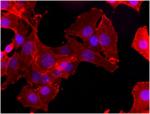
NIH3T3 cells were fixed with 1% PFA and then stained with 10... 
C57BL/6 mouse frozen spleen section was fixed with 4% parafo... -
Biotin anti-mouse CD34

Mouse NIH/3T3 cell line stained with biotinylated MEC14.7, f... 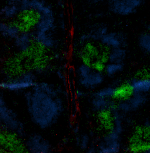
C57BL/6 mouse frozen spleen section was fixed with 4% parafo... -
PE anti-mouse CD34
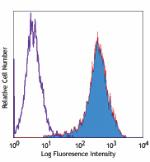
Mouse NIH/3T3 cell line stained with MEC14.7 PE -
Alexa Fluor® 647 anti-mouse CD34
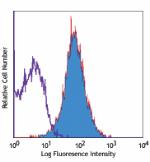
Mouse NIH/3T3 cell line stained with MEC14.7 Alexa Fluor® 64... 
Mouse NIH/3T3 cells were fixed with 1% paraformaldehyde (PFA... -
PE/Cyanine5 anti-mouse CD34
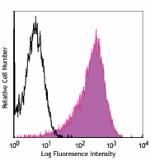
Mouse NIH/3T3 cell line stained with MEC14.7 PE/Cyanine5 -
APC anti-mouse CD34
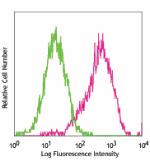
NIH3T3 cells stained with MEC14.7APC -
Brilliant Violet 421™ anti-mouse CD34
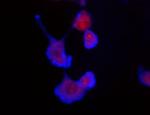
Mouse fibroblast cell line NIH/3T3 was stained with CD34 (cl... 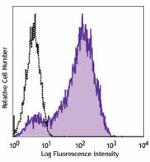
Mouse fibroblast cell line NIH/3T3 was stained with CD34 (cl... -
PE/Cyanine7 anti-mouse CD34
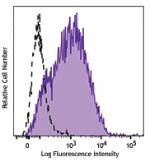
Mouse fibroblast cell line NIH/3T3 was stained with CD34 (c... -
PerCP/Cyanine5.5 anti-mouse CD34
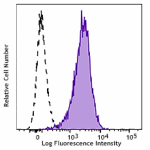
Mouse fibroblast cell line NIH/3T3 was stained with CD34 (cl... -
PE/Dazzle™ 594 anti-mouse CD34
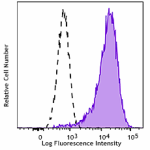
Mouse fibroblast cell line NIH/3T3 was stained with CD34 (cl...

 Login / Register
Login / Register 











Follow Us